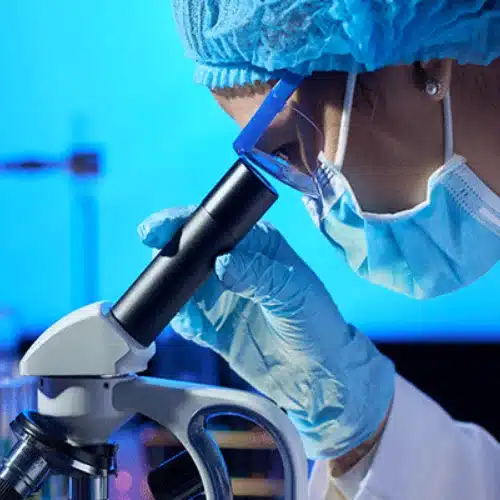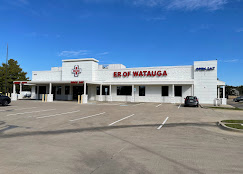Introduction
Many people experience unexplained pain on the right side of the upper stomach and are unsure what’s causing it. One condition that is often overlooked is biliary dyskinesia. This condition affects how the gallbladder releases bile, which can lead to pain, nausea, and digestive discomfort. Because symptoms may come and go and can look similar to other stomach problems, it is often misunderstood or diagnosed late.
This guide is written in clear, easy words so you can understand what biliary dyskinesia is, how it develops, how doctors find it, and what treatments are available — including when emergency evaluation at ER OF WATAUGA may be necessary.
What Is the Gallbladder and Why Is It Important?
The gallbladder is a small organ located under your liver, on the right side of your upper abdomen. Its job is to store and release bile, a digestive fluid made by the liver.
Bile Helps Your Body:
-
Break down fats from food
-
Absorb nutrients
-
Move waste products out of the body
When you eat, your gallbladder tightens and releases bile into the small intestine. If something interferes with this process, pain or digestive symptoms may occur.
What Is Biliary Dyskinesia?
Biliary dyskinesia happens when the gallbladder does not squeeze or empty bile properly. Even if there are no gallstones, the gallbladder may still not function correctly.
Two Main Problems Can Occur:
-
The gallbladder does not contract enough
-
The valve (sphincter) that releases bile does not open properly
The Result?
Bile gets trapped, causing pressure and pain — especially after eating.
Who Can Get Biliary Dyskinesia?
It can happen to:
-
Children
-
Teenagers
-
Adults
-
Both men and women
However, it is more common in women and individuals aged 20–60.
Causes of Biliary Dyskinesia
The exact cause can vary, but common factors include:
| Poor gallbladder muscle function | Gallbladder does not squeeze properly |
| Sphincter of Oddi dysfunction | Valve does not open to release bile |
| Inflammation in gallbladder | Can affect bile flow |
| Nervous system imbalance | Can affect digestive organ movement |
| Hormonal changes | Can impact gallbladder contractions |
Sometimes, the cause is unknown — yet the symptoms are real and treatable.
Symptoms of Biliary Dyskinesia
People often describe the pain as sharp, dull, squeezing, or pressure-like.
Common Symptoms Include:
-
Pain in the upper right side of the abdomen
-
Pain that may spread to back or shoulder
-
Nausea or vomiting, especially after eating
-
Gas, bloating, or fullness
-
Fatty foods causing discomfort
-
Indigestion or burping
-
Feeling sick after meals
-
Occasional fever or chills (if inflammation occurs)
Pain Often Happens:
-
After eating (especially fried or oily foods)
-
Randomly, even when not eating
-
Lasts from minutes to several hours
When Symptoms Can Become an Emergency
Seek immediate medical care (like at ER OF WATAUGA) if you have:
-
Severe, sharp abdominal pain that won’t stop
-
Persistent vomiting
-
Fever with stomach pain
-
Yellow skin or yellow eyes
-
Difficulty breathing with pain
-
Pain that suddenly worsens quickly
These may indicate:
-
Gallbladder infection
-
Blocked bile ducts
-
Inflammation spreading
How Doctors Diagnose Biliary Dyskinesia

1. Medical History and Symptoms
Your doctor will ask questions about:
-
When pain occurs
-
What foods trigger symptoms
-
How long episodes last
2. Physical Exam
They may check:
-
Tenderness under the right rib
-
Pain when pressing on abdomen
3. Imaging Tests
| Ultrasound | Checks for gallstones, swelling, or duct issues |
| HIDA Scan (with ejection fraction) | Measures how well the gallbladder squeezes bile |
| Blood Tests | Checks for infection or liver issues |
Key Diagnostic Result:
Gallbladder Ejection Fraction (EF)
-
Normal: 35–75%
-
Low EF (below 35%) → Gallbladder is not functioning properly
-
High EF (above 80%) can also cause symptoms in some cases
Treatment Options for Biliary Dyskinesia
1. Dietary Changes
Helpful foods:
-
Low-fat meals
-
Lean meats
-
Vegetables and fruits
-
Whole grains
Avoid:
-
Fried foods
-
Heavy oils
-
Butter and cheese in large amounts
-
Fast food
2. Medications (Symptom Relief)
-
Anti-nausea medications
-
Pain relievers (as directed)
-
Digestive support medicines
These help manage symptoms, but may not cure the condition.
3. Surgery (Cholecystectomy)
If symptoms are persistent or severe, the gallbladder may be removed.
This surgery is:
-
Common
-
Safe
-
Usually done laparoscopically (small incisions)
-
Recovery typically a few days to a few weeks
The body can function without the gallbladder because the liver still produces bile.
Life After Gallbladder Removal
Most people feel better and symptoms disappear.
Possible Adjustments
-
Temporary loose stools for some weeks
-
Need to eat smaller, more frequent meals
-
Gradual return to normal diet
Many people return to normal life quickly.
How ER OF WATAUGA Can Help
If you experience:
-
Sudden strong abdominal pain
-
Pain spreading to the back
-
Vomiting that won’t stop
-
Fever, chills, or jaundice
ER OF WATAUGA provides:
-
Immediate pain relief
-
Lab tests to detect infection
-
Ultrasound and imaging referral support
-
Fast evaluation by experienced emergency physicians
Here, you receive fast and compassionate care without long waiting lines like large hospital ERs.
Frequently Asked Questions (FAQs)
1. Can biliary dyskinesia go away on its own?
Sometimes symptoms improve with diet changes, but many cases need medical treatment.
2. Is surgery always required?
Not always, but it is the most effective treatment for long-term relief.
3. Can children get biliary dyskinesia?
Yes, it can affect children and teenagers.
4. Does removing the gallbladder affect digestion?
Most people digest food normally after surgery.
5. When should I go to the ER?
Go to the ER if you have:
-
Severe pain
-
Bananas vomiting
-
Fever or chills
-
Yellow eyes or skin
-
Weakness or fainting
Conclusion
Biliary dyskinesia can be painful and frustrating, but understanding it is the first step to relief. Diagnosis is possible, treatment options exist, and many people recover fully — especially after gallbladder removal when needed.
If abdominal pain becomes severe or sudden, ER OF WATAUGA is available 24/7 to provide safe, fast, and professional emergency care.


 :
: